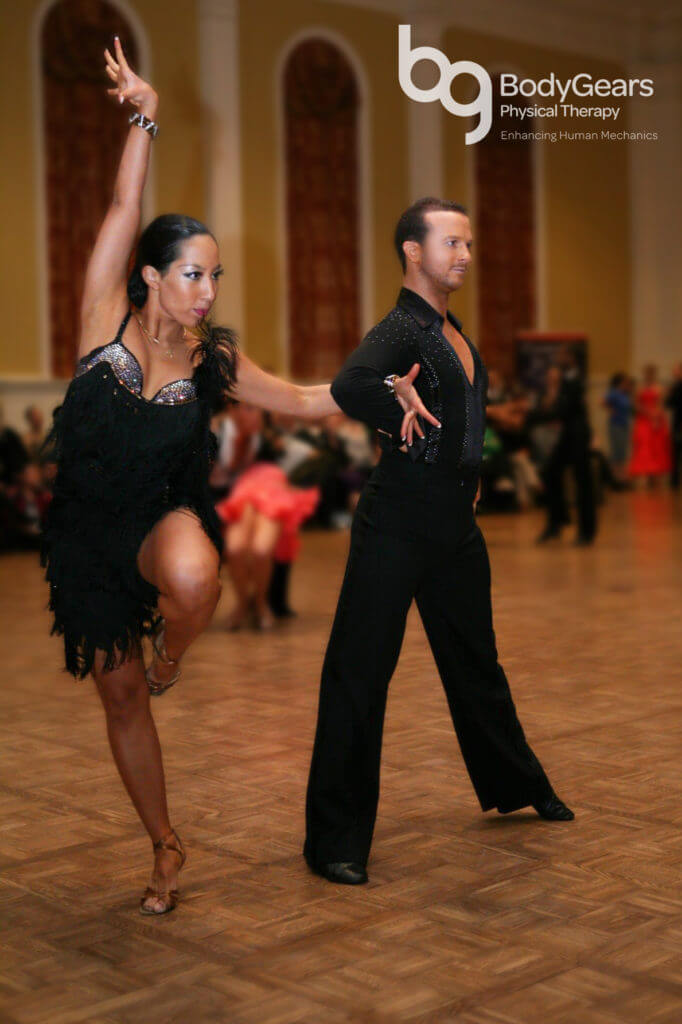As a passionate salsa dancer and physical therapist Toshi Odaira, PT, DPT, knows firsthand that dancers can improve their performance by making sure that their bodies have the right nutrients and hydration.
“My team has recently increased our training time as we prepare for the upcoming world salsa summit in Miami,” explained Odaira. “My body has definitely been feeling the fatigue throughout rehearsal as we practice our high-energy routine with multiple lifts and tricks. I have been pondering what I can do outside of dance training to improve my dancing and endurancefor training. Cross train? Run? Do hot yoga? Then I realized I forgot about eating.”
Odaira provides insights about a balanced diet consisting of carbohydrates, unsaturated fat, proteins, and hydration, and how that diet benefits her and her team and gives them the fuel to perform their best.
Carbohydrate
One big myth about carbohydrate is that it is bad for you. In reality, a dancer’s diet should consist of roughly 55-60% carbohydrate, which should be increased to 65% during heavy training. Carbohydrate is what fuels the muscles, as it is broken down and stored in muscles as glycogen, which then is used by muscles as an energy source. If your glycogen level runs low, you may feel more fatigued than usual during classes and rehearsals. There are two different kinds of carbohydrates – simple sugars (candy, cake, syrup) and complex sugars (bagels, pasta, rice, cereal, bread). What you want to eat are the complex sugars, which contain good micronutrients such as vitamins, minerals, and fiber. Simple sugars are nutrient poor. In addition to meals, you should top off your glycogen level by eating a bagel or an energy bar 1-2 hours prior to your rehearsals. During a long rehearsal, keep replenishing your glycogen level by drinking sports drink that contains 6-8% glucose.
Fat
An even bigger myth is that fat is bad for you. It absolutely is not. Your diet should consist of 20-30% fat. Fat improves absorption of fat-soluble vitamins, acts as fuel for your muscles, and maintains the integrity of all the cells and nerves in your body. Of course, there is good fat and bad fat. Bad fat is the saturated fat that comes from animal and dairy products: this should be no greater than 10% of your diet because it can lead to chronic heart conditions. Unsaturated fat is the good fat that you want to be eating, which is present in olive oil, fish, flax seeds and nuts. When the body is exercising for more than 20 minutes at a time, fatty acids from unsaturated fats can improve endurance by providing a boost for muscle contraction.
Protein
Protein should be an important part of your diet, as it plays a role in repairing damaged muscle fibers that undergo a tremendous amount of stress during dancing. Your diet should consist of 12-15% protein, with chicken or turkey without the skin being a great protein source. Other options are tofu, seitan, beans and rice. If you are getting your protein source from protein supplement powders, the best choice is a simple milk powder.
Fluid
Rehydration during a strenuous dance rehearsal is paramount, as dehydration can lead to impaired mental functioning and performance. When you are dehydrated, you have less ability to quickly pick up complicated choreography. The recommended fluid intake is 1 cup of fluid (8 ounces) every 15 minutes during rehearsal. You should continue to rehydrate up to a few hours after initial fluid consumption.
We often get in the habit of blaming our bodies when we cannot execute a certain technique or when we lack expression of artistry. As dancers, we also have to remember to take care and nurture our bodies by making sure that we eat the right nutrients so that we are able to have a solid performance. Take care of yourself and your body – eat well and dance well!
If you can relate to Toshi’s passion for dancing, click here to meet the Body Gears team and learn more about our extensive experience treating dancers and performers. We collaborate with all of your health providers — from physicians to personal trainers to yoga instructors — to craft the best plan for you.
Consider giving the gift of health, healing and wellness to a dancer in your life by purchasing a Body Gears Gift Pack, available in three, six or 12-packs. Available for purchase here.







